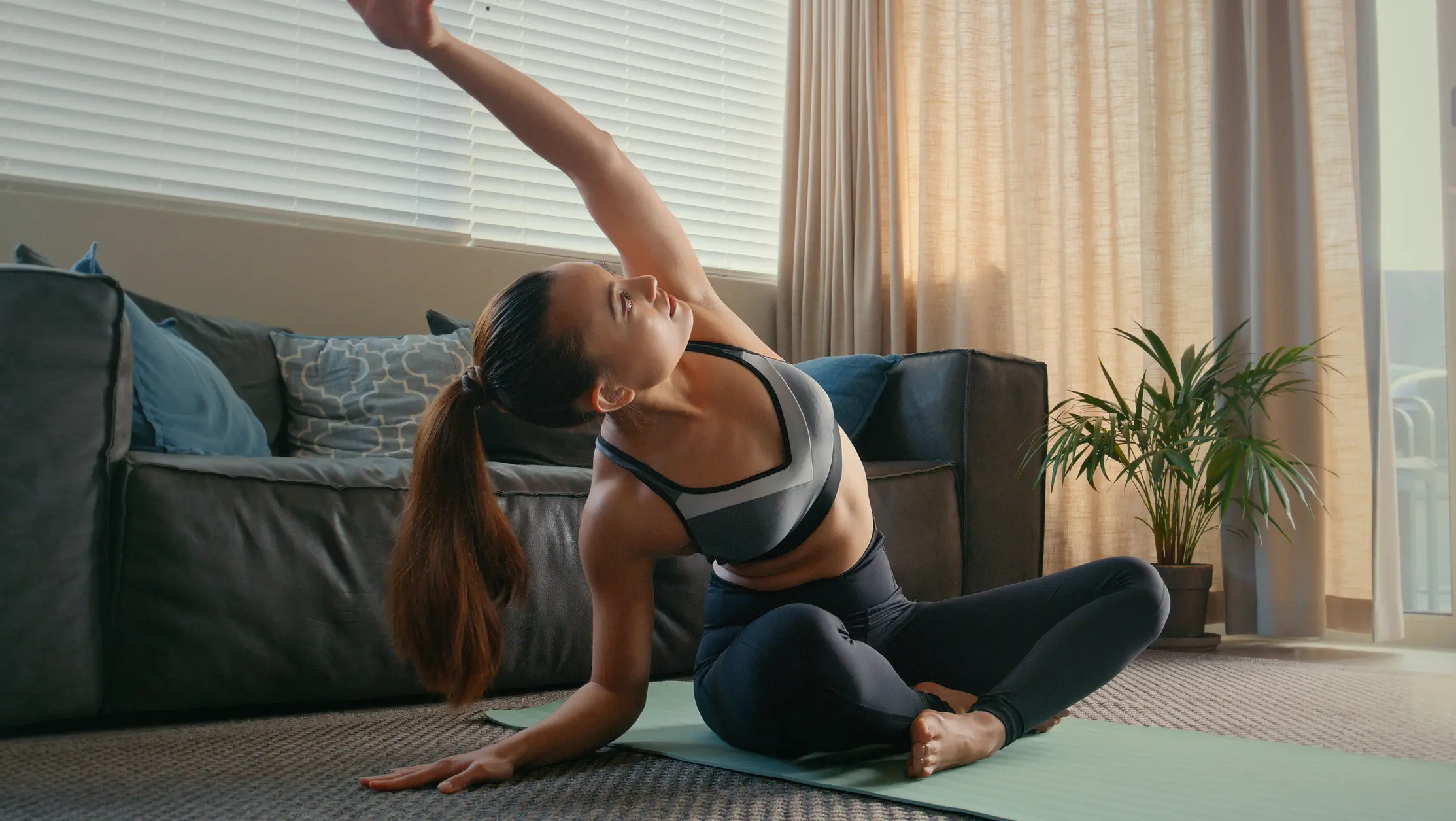Cross-training has gained significant popularity in recent years for its ability to enhance overall fitness, prevent injuries, and break through plateaus. Unlike single-sport training that focuses on specific muscles or skill sets, cross-training introduces a variety of exercises and movements that engage different muscle groups and improve overall performance. This approach is especially beneficial for athletes, fitness enthusiasts, and individuals looking to maintain a healthy lifestyle.
In this comprehensive guide, we will explore three key principles of effective cross-training. These principles can be applied to anyone, whether you’re a runner, cyclist, swimmer, or gym-goer, aiming to maximize the benefits of your workout routine. We’ll also discuss why cross-training is essential, how it prevents burnout and injuries, and how to design a balanced program that fits your goals.
Table of Contents
- Introduction to Cross-Training
- What is Cross-Training?
- Benefits of Cross-Training
- Why is Cross-Training Important?
- Principle 1: Balance and Variety
- Engaging Multiple Muscle Groups
- Reducing Overuse Injuries
- Psychological Benefits of Variety
- Incorporating Different Types of Exercises
- Principle 2: Recovery and Rest
- Importance of Recovery in Fitness
- How Cross-Training Enhances Recovery
- Active vs. Passive Recovery
- Incorporating Recovery Techniques
- Principle 3: Specificity and Goal Alignment
- Aligning Cross-Training with Your Primary Goals
- Strength vs. Endurance
- Sport-Specific Cross-Training
- Monitoring Progress and Adaptation
- Designing an Effective Cross-Training Program
- Identifying Your Goals
- Example Workouts for Different Types of Athletes
- How to Track Progress and Make Adjustments
1. Introduction to Cross-Training
What is Cross-Training?
Cross-training refers to the practice of using different types of exercise routines or sports to improve overall fitness. Instead of focusing solely on one type of activity (e.g., running), you introduce other exercises (such as swimming, strength training, or cycling) to create a well-rounded fitness routine.
For example, a runner might incorporate weightlifting and swimming into their weekly routine to balance strength and endurance. Cross-training allows for a broader development of muscles, reduces the risk of injury from repetitive strain, and can lead to improvements in athletic performance across various disciplines.
Benefits of Cross-Training
There are numerous benefits to cross-training, including:
- Injury Prevention: By engaging in different activities, you give overused muscles a chance to recover, reducing the likelihood of injuries caused by repetitive motion.
- Improved Overall Fitness: Cross-training targets various muscle groups, improves cardiovascular endurance, and promotes flexibility and agility.
- Increased Motivation: The variety offered by cross-training keeps your workouts fresh and exciting, helping you stay motivated and avoid burnout.
- Enhanced Recovery: Different forms of exercise, particularly low-impact activities like swimming or yoga, aid in recovery by stimulating blood flow without adding stress to your body.
- Skill Transfer: Many movements in cross-training exercises can improve performance in your primary sport or activity. For instance, strength training enhances your power output for running or cycling.
Why is Cross-Training Important?
Cross-training is essential because it addresses the weaknesses that often arise from a single-sport focus. When we repeatedly engage in the same movement patterns, we risk creating muscular imbalances and overuse injuries. Cross-training helps correct these issues by promoting full-body fitness, enabling athletes to build strength, flexibility, endurance, and coordination across various activities.
For example, if you’re a runner who only runs, you’re likely to develop strong legs but weak upper body muscles. This imbalance could eventually lead to postural issues or injuries. By incorporating upper-body strength training, you ensure a more balanced development, reducing the risk of injury and improving your running performance.
2. Principle 1: Balance and Variety
Engaging Multiple Muscle Groups
One of the main reasons for incorporating balance and variety into your cross-training regimen is to engage different muscle groups. Single-sport athletes often develop strong muscles in the areas they use most, but neglect others. Over time, this can lead to muscular imbalances and limited range of motion, increasing the risk of injury.
For example, cyclists develop powerful quadriceps and calves, but they may have underdeveloped hamstrings or upper-body muscles. Similarly, swimmers may have strong shoulders and lats but weak core stability.
Cross-training combats this by ensuring that you work out all major muscle groups. This holistic approach not only prevents imbalances but also improves your overall fitness, making you a more versatile athlete. Engaging multiple muscle groups also helps with functional fitness — the kind of strength and coordination you need in everyday life.
Some exercises that effectively engage different muscle groups include:
- Swimming: A full-body workout that builds cardiovascular endurance, strengthens the core, and tones upper and lower body muscles.
- Strength Training: Focuses on building muscle mass, which helps with power, speed, and injury prevention in other sports.
- Yoga: Enhances flexibility, balance, and core strength, all of which are vital for injury prevention and optimal performance.
Reducing Overuse Injuries
One of the most common challenges in single-sport training is the risk of overuse injuries. These occur when specific muscles, tendons, and ligaments are strained repeatedly without adequate recovery time. Overuse injuries can be debilitating and take weeks, if not months, to heal.
Cross-training reduces the likelihood of overuse injuries by distributing the strain across various muscle groups. By incorporating low-impact exercises, like swimming or cycling, into your regimen, you can give overworked muscles a chance to recover while still maintaining your fitness level.
Psychological Benefits of Variety
Engaging in the same workout routine day after day can lead to mental fatigue and boredom, which diminishes motivation. By introducing variety, cross-training keeps workouts interesting, challenging, and fun. A more engaging routine helps maintain long-term commitment to fitness, allowing you to enjoy your exercise sessions while still working towards your goals.
A diverse routine also helps train different aspects of your mind-body connection. For example, yoga teaches mindfulness and breath control, which can benefit athletes by improving concentration and stress management during competition. Strength training, on the other hand, builds mental resilience as you push through heavy lifts or challenging circuits.
Incorporating Different Types of Exercises
To ensure variety, your cross-training program should incorporate different types of exercises that complement your primary activity. These exercises can be broken down into:
- Cardiovascular Training: Activities like running, swimming, and cycling that improve cardiovascular endurance and aerobic capacity.
- Strength Training: Lifting weights or using resistance bands to build muscle mass, bone density, and overall strength.
- Flexibility and Mobility: Yoga, Pilates, or stretching routines that improve range of motion and joint health.
- Balance and Agility: Exercises like plyometrics, agility drills, or balance work that enhance coordination, reaction time, and overall stability.
3. Principle 2: Recovery and Rest
Importance of Recovery in Fitness
In the pursuit of better performance, many athletes overlook the importance of recovery. However, recovery is when your body repairs itself and grows stronger. Without adequate rest, you risk overtraining, which can lead to diminished performance, chronic fatigue, and even injury.
Cross-training plays an essential role in active recovery, as it allows you to remain active while giving certain muscle groups time to rest. For example, if you’re a runner, you can swim on your recovery days to maintain cardiovascular endurance without stressing your legs.
How Cross-Training Enhances Recovery
Active recovery exercises promote blood flow, help remove metabolic waste from muscles, and decrease soreness. The key is to engage in low-intensity activities that stimulate recovery rather than exacerbate fatigue. Swimming, light cycling, yoga, or even walking are excellent options for active recovery, as they allow for movement without placing too much strain on your body.
Cross-training also helps by varying the intensity of your workouts. For example, high-intensity weightlifting sessions should be balanced with lower-intensity activities like yoga or stretching, which allow your body to recover while still promoting flexibility and mobility.
Active vs. Passive Recovery
Recovery comes in two forms: active and passive. Both are crucial, but active recovery can be more beneficial for maintaining overall fitness.
- Active Recovery: This involves low-intensity exercise that helps muscles recover while keeping your body moving. It enhances circulation, removes toxins, and keeps muscles supple. Yoga, swimming, and light cycling are great examples of active recovery exercises.
- Passive Recovery: This refers to complete rest, which is essential after intense workouts. Your body needs this time to repair muscles and tissues. However, too much passive recovery can lead to stiffness and decreased mobility, so it should be balanced with active recovery.
Incorporating Recovery Techniques
Aside from active recovery, consider adding additional recovery techniques into your cross-training program. These might include:
- Foam Rolling: Self-myofascial release helps relieve muscle tightness, improve flexibility, and speed up recovery.
- Massage Therapy: Professional massages or self-massage techniques can increase blood flow, reduce muscle soreness, and prevent injury.
- Sleep: One of the most critical aspects of recovery. Aim for 7–9 hours of sleep per night to ensure your body has enough time to repair and recharge.
- Hydration and Nutrition: Proper hydration and balanced nutrition are essential for recovery. Ensure you’re fueling your body with the right nutrients, including protein for muscle repair and carbohydrates for energy replenishment.
4. Principle 3: Specificity and Goal Alignment
Aligning Cross-Training with Your Primary Goals
One of the most important aspects of cross-training is aligning it with your specific fitness goals. Whether you want to improve endurance, build strength, or enhance flexibility, your cross-training program should reflect these goals.
For example, if you’re a runner aiming to increase endurance, your cross-training should focus on cardiovascular activities like swimming or cycling, paired with strength training for lower-body stability. If your goal is to increase power, you might prioritize weightlifting, plyometrics, and high-intensity interval training (HIIT).
Strength vs. Endurance
Cross-training can be used to build both strength and endurance, depending on your specific goals. Here’s how you might tailor your workouts based on what you’re trying to achieve:
Endurance: Incorporate longer, steady-state cardiovascular exercises like swimming, running, or cycling to enhance aerobic capacity.
Strength: Focus on weightlifting, bodyweight exercises, and plyometrics to build muscle mass.
For strength-focused athletes, the goal is to enhance muscle power and hypertrophy. Cross-training for strength might include exercises such as:
- Weightlifting: Exercises like squats, deadlifts, and bench presses build overall muscle mass and strength.
- Bodyweight exercises: Push-ups, pull-ups, and planks can help improve functional strength without the need for equipment.
- Plyometrics: These explosive movements (like box jumps, jump squats, or burpees) build power, which can translate into improved performance in other sports and activities.
For endurance-focused athletes, the emphasis is on sustaining activity over long periods without fatigue. Cross-training for endurance might include:
- Steady-state cardio: Swimming, cycling, or long-distance running trains your cardiovascular system to support prolonged physical activity.
- HIIT (High-Intensity Interval Training): Short bursts of high-intensity exercise followed by brief recovery periods help improve cardiovascular capacity and metabolic efficiency.
- Circuit training: Combining strength and cardio exercises in circuits keeps your heart rate elevated while still building endurance and strength.
By aligning your cross-training program with your goals—whether they involve building muscle, improving endurance, or enhancing flexibility—you ensure that every session brings you closer to your desired outcomes. This personalized approach also keeps your routine efficient and effective, allowing for greater overall improvement.
Sport-Specific Cross-Training
When creating a cross-training program, it’s essential to consider the specific demands of your primary sport or activity. Different sports require varying degrees of strength, endurance, agility, and flexibility, and your cross-training should reflect those needs.
For example, if you’re a cyclist, you’ll want to emphasize lower-body strength and cardiovascular endurance in your cross-training. This might mean incorporating weightlifting for your legs, core work for stability, and swimming for cardiovascular fitness without the impact on your joints. On the other hand, if you’re a basketball player, you’ll focus on agility, plyometrics, and strength training for explosive power.
Here’s how some common sports can benefit from specific cross-training:
- Runners: Incorporate strength training for your core and lower body to improve form and prevent injuries. Swimming can help maintain cardiovascular fitness while reducing the impact on your joints.
- Cyclists: Focus on core stability and flexibility, as well as upper body strength to support better posture and control during long rides.
- Swimmers: Engage in strength training, particularly for the legs and core, to improve your kick. Plyometrics can also help with explosive starts and turns.
- Team Sports (e.g., soccer, basketball): Incorporate agility drills, plyometrics, and strength training to enhance speed, power, and coordination.
This tailored approach ensures that your cross-training doesn’t just improve overall fitness, but also directly benefits your performance in your primary sport.
Monitoring Progress and Adaptation
As with any training program, it’s essential to monitor your progress and make adjustments as necessary. While cross-training provides variety, it’s important to keep an eye on how it impacts your overall performance and whether it aligns with your goals. Are you becoming faster, stronger, or more agile? Are you recovering faster or feeling less fatigued after workouts?
Track your performance in both your primary sport and cross-training activities to gauge whether your regimen is working. If you’re not seeing the desired results, you may need to tweak the balance of strength, endurance, flexibility, or recovery in your routine.
In addition, remember that your body will adapt to your training over time. What challenges you today might not have the same effect six months from now. Continually progress your workouts by increasing intensity, adding new exercises, or altering the focus of your cross-training to prevent plateaus and ensure consistent improvement.
5. Designing an Effective Cross-Training Program
Creating an effective cross-training program requires careful planning and attention to your personal goals, current fitness level, and the demands of your primary sport or activity. Below are some steps and considerations for designing your cross-training routine.
Identifying Your Goals
The first step in designing your cross-training program is to clearly define your goals. Do you want to build strength, improve endurance, increase flexibility, or enhance overall fitness? Identifying your primary objectives will help determine the structure and focus of your cross-training sessions.
- Goal: Improve endurance → Incorporate longer cardiovascular exercises (e.g., running, cycling, swimming).
- Goal: Build strength → Focus on weightlifting, plyometrics, and bodyweight exercises.
- Goal: Enhance flexibility → Include yoga, stretching, and mobility work in your routine.
Once you’ve defined your goals, you can begin structuring your workouts accordingly, ensuring that you’re balancing different types of activities throughout the week.
Example Workouts for Different Types of Athletes
Here are some example cross-training routines tailored to different fitness goals and primary sports:
- Runner’s Cross-Training Routine:
- Monday: Strength training (lower body focus)
- Tuesday: Interval running workout (speed intervals)
- Wednesday: Swimming (endurance and recovery)
- Thursday: Strength training (core and upper body)
- Friday: Easy run or cycling (active recovery)
- Saturday: Long run (endurance)
- Sunday: Yoga or stretching (flexibility and recovery)
- Cyclist’s Cross-Training Routine:
- Monday: Strength training (lower body focus)
- Tuesday: Interval cycling workout (hill repeats or sprints)
- Wednesday: Swimming (endurance and recovery)
- Thursday: Strength training (core and upper body)
- Friday: Yoga or Pilates (flexibility and mobility)
- Saturday: Long ride (endurance)
- Sunday: Active recovery (walking, light cycling, or swimming)
- General Fitness Routine:
- Monday: Strength training (full body)
- Tuesday: HIIT or interval training (cardio focus)
- Wednesday: Yoga or Pilates (flexibility and recovery)
- Thursday: Strength training (focus on weak areas)
- Friday: Cardiovascular workout (cycling, swimming, running)
- Saturday: Active recovery (walking or light exercise)
- Sunday: Rest day or meditation/stretching
Each routine is balanced to include strength, endurance, flexibility, and recovery. You can adjust these depending on your specific goals and fitness level.
How to Track Progress and Make Adjustments
As you engage in cross-training, it’s important to track your progress to ensure that you’re meeting your goals and avoiding plateaus. Keep a training journal or use a fitness app to log the following:
- Workout duration and intensity: Track how long each session lasts and the intensity (e.g., light, moderate, or intense).
- Performance metrics: Record your running speed, cycling distance, weights lifted, or other relevant stats to see how you’re improving over time.
- Recovery: Note how your body feels before and after workouts. Are you recovering faster, or are you feeling fatigued?
- Injury prevention: Keep track of any aches, pains, or injuries that may arise. Are you experiencing fewer injuries compared to when you trained solely in one sport?
By consistently tracking your progress, you can identify areas where you may need to adjust your cross-training program. For example, if you’re not building strength as quickly as you’d like, you may need to increase your strength-training volume or intensity. If you’re feeling overly fatigued, you may need to focus more on recovery and reduce the intensity of your sessions.
Conclusion
Cross-training is a powerful tool that can improve overall fitness, enhance performance in your primary sport, and reduce the risk of injury. By following the three key principles—balance and variety, recovery and rest, and specificity and goal alignment—you can create an effective and sustainable cross-training program that supports your individual goals.
Whether you’re an endurance athlete, strength enthusiast, or someone looking to stay active and healthy, cross-training allows you to engage in a well-rounded routine that keeps you motivated, helps prevent burnout, and leads to long-term success. Keep experimenting with different exercises and listen to your body to ensure that you continue progressing and enjoying the process.
By incorporating cross-training into your routine, you’re not only investing in your physical fitness but also building a foundation for longevity and overall well-being in your chosen sport or activity.
Recent studies have shown that incorporating technology, such as fitness apps and wearable devices, into cross-training routines can enhance motivation and track progress more effectively. These tools provide real-time feedback and personalized workout suggestions, helping individuals stay on track with their fitness goals. Additionally, virtual cross-training classes have gained popularity, offering a convenient way to access diverse workouts from home, further expanding the accessibility and appeal of cross-training.
In recent developments, cross-training has also been linked to improved mental health outcomes. Engaging in a variety of physical activities can reduce stress, anxiety, and depression by promoting the release of endorphins and providing a sense of accomplishment. Furthermore, the social aspect of group cross-training sessions, whether in-person or virtual, can enhance community support and motivation, contributing to overall well-being.















One Comment